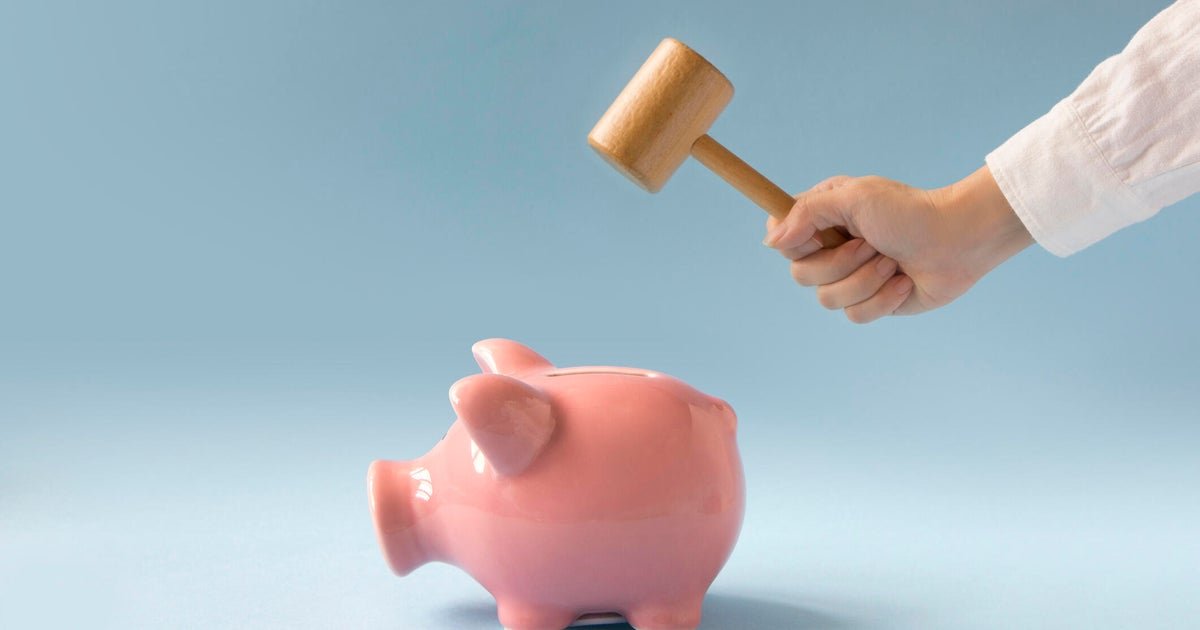Getty Images
Financial stress has a way of sneaking up on you. One day you’re managing your bills just fine, and the next you’re lying awake and wondering how you’ll make next month’s debt payments. The current economic climate hasn’t made things any easier, either. While inflation has cooled recently, years of elevated inflation have pushed up the cost of everything from groceries to gas, while the high-rate environment is making it more expensive to borrow money. Add in issues like unexpected medical bills, a job loss or a major life change, and suddenly you’re staring at debt that feels impossible to maintain.
That’s when the idea of bankruptcy may come into play. While the word bankruptcy may carry a heavy stigma, the reality is that this type of debt relief is a legal tool designed to give people a fresh start when their debt becomes mathematically impossible to overcome. Every year, hundreds of thousands of people file for bankruptcy protection, and many of them are simply people who found themselves in financial situations beyond their control.
How do you know when your debt issues have crossed the line from “things are tight” to “I need serious help,” though? After all, it’s important to recognize that milestone, as waiting any longer could just be avoiding the inevitable. Luckily, there are a few warning signs that indicate that bankruptcy is now the best option for getting back on solid financial ground. Below, we’ll detail four of those worth understanding.
Get more help with your overwhelming credit card debt today.
4 clear signs that bankruptcy is your best option now
If you’re unsure as to whether bankruptcy or another debt relief option may be your best bet, keep an eye out for these warning signs:
You’re using one debt to pay another
When you start using credit cards to pay other bills, taking cash advances to make loan payments or transferring balances between cards just to stay afloat, you’ve entered dangerous territory. This financial juggling act, colloquially known as robbing Peter to pay Paul, is a clear sign that your debt has become unmanageable and you’re borrowing your way into deeper trouble.
The math becomes especially brutal when you’re paying cash advance fees (which are typically 3% to 5% of the amount), balance transfer fees and higher interest rates on these transactions. You might feel like you’re solving problems by moving money around, but you’re actually creating a complex web of debt that becomes harder to escape with each transaction.
So, if you’re regularly shuffling money between accounts to meet basic obligations, taking advantage of what bankruptcy can offer could make sense. Filing for bankruptcy can break this cycle and give you a clean slate to work with real money instead of borrowed funds.
Find out how the right debt relief strategy could benefit you now.
You’re spending more than half your income on essential bills
When your mortgage or rent, utilities, groceries, transportation and minimum debt payments consume more than 50% of your income, you’re in what financial experts call “survival mode.” At this level, there’s virtually no room for unexpected expenses, emergency savings or quality of life improvements. You’re essentially one car breakdown or minor emergency away from falling behind on everything.
This situation is particularly dangerous because it’s unsustainable long term. You can’t build wealth, invest in your future or even maintain your current lifestyle when essential expenses, like healthcare costs, housing and other necessities, are consuming most of your paycheck. In these cases, bankruptcy can help reset your financial obligations to a manageable level, offering you breathing room to rebuild a sustainable budget.
You’re weighing the idea of draining your retirement accounts
One of the options that people tend to weigh during a financial crisis is raiding their retirement savings to pay off their debt. But retirement accounts like 401(k)s and IRAs are typically protected in bankruptcy, meaning you can eliminate debt while preserving these crucial assets for your future.
So, if you’re contemplating early retirement withdrawals that will trigger taxes and penalties, filing for Chapter 7 or Chapter 13 bankruptcy might be a far better option. After all, the money you’d lose to taxes and penalties by taking an early retirement withdrawal, combined with the lost growth potential of those funds, often exceeds the cost of filing for bankruptcy.
You’re facing foreclosure or repossession
If you’re behind on mortgage payments or car loans and are facing foreclosure or repossession, bankruptcy can provide powerful protection. For example, Chapter 13 bankruptcy allows you to catch up on missed payments over three to five years while keeping your home or vehicle. The automatic stay that takes immediate effect when you file stops foreclosure proceedings and gives you time to reorganize your finances.
But even if you ultimately can’t save your home, bankruptcy can help you manage the process more favorably. You might be able to negotiate a deed in lieu of foreclosure or ensure that any remaining balance after a foreclosure sale is discharged, preventing the lender from pursuing you for a deficiency judgment.
The bottom line
Bankruptcy isn’t an admission of failure; it’s a recognition that sometimes life delivers financial blows that exceed your ability to handle them through conventional means. The bankruptcy system exists for those who need a fresh start to rebuild their lives and contribute to the economy again. So, if you’re experiencing multiple warning signs from this list, it’s important to consult with a bankruptcy or debt relief expert about the options available to you. Many offer free consultations to help you determine whether bankruptcy or another debt relief strategy makes sense for your specific situation. Just remember that the goal of whatever strategy you choose isn’t just to eliminate debt. It’s to create a sustainable financial future.
